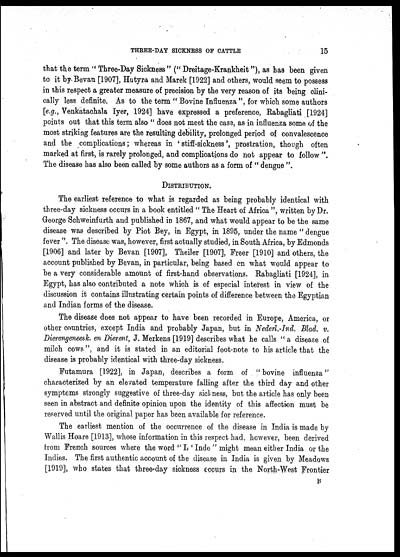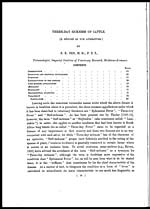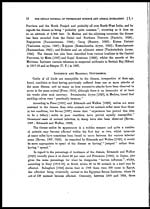Medicine - Veterinary > Veterinary colleges and laboratories > Indian journal of veterinary science and animal husbandry > Volume 1, 1931 > Part I (March 1931) > Three-day sickness of cattle (a resume of the literature)
(45) Page 15
Download files
Individual page:
Thumbnail gallery: Grid view | List view

THREE-DAY SICKNESS OF CATTLE 15
that the term " Three-Day Sickness " (" Dreitage-Krankheit "), as has been given
to it by Bevan [1907], Hutyra and Marek [1922] and others, would seem to possess
in this respect a greater measure of precision by the very reason of its being clini-
cally less definite. As to the term " Bovine Influenza ", for which some authors
[e.g., Venkatachala Iyer, 1924] have expressed a preference, Rabagliati [1924]
points out that this term also " does not meet the case, as in influenza some of the
most striking features are the resulting debility, prolonged period of convalescence
and the complications; whereas in ' stiff-sickness ', prostration, though often
marked at first, is rarely prolonged, and complications do not appear to follow ".
The disease has also been called by some authors as a form of " dengue ".
DISTRIBUTION.
The earliest reference to what is regarded as being probably identical with
three-day sickness occurs in a book entitled " The Heart of Africa ", written by Dr.
George Schweinfurth and published in 1867, and what would appear to be the same
disease was described by Piot Bey, in Egypt, in 1895, under the name " dengue
fever ". The disease was, however, first actually studied, in South Africa, by Edmonds
[1906] and later by Bevan [1907], Theiler [1907], Freer [1910] and others, the
account published by Bevan, in particular, being based on what would appear to
be a very considerable amount of first-hand observations. Rabagliati [1924], in
Egypt, has also contributed a note which is of especial interest in view of the
discussion it contains illustrating certain points of difference between the Egyptian
and Indian forms of the disease.
The disease does not appear to have been recorded in Europe, America, or
other countries, except India and probably Japan, but in Nederl.-Ind. Blad. v.
Dierengeneesk. en Dierent, J. Merkens [1919] describes what he calls " a disease of
milch cows", and it is stated in an editorial foot-note to his article that the
disease is probably identical with three-day sickness.
Futamura [1922], in Japan, describes a form of " bovine influenza "
characterized by an elevated temperature falling after the third day and other
symptoms strongly suggestive of three-day sickness, but the article has only been
seen in abstract and definite opinion upon the identity of this affection must be
reserved until the original paper has been available for reference.
The earliest mention of the occurrence of the disease in India is made by
Wallis Hoare [1913], whose information in this respect had, however, been derived
from French sources where the word " L ' Inde " might mean either India or the
Indies. The first authentic account of the disease in India is given by Meadows
[1919], who states that three-day sickness occurs in the North-West Frontier
B
Set display mode to: Large image | Zoom image | Transcription
Images and transcriptions on this page, including medium image downloads, may be used under the Creative Commons Attribution 4.0 International Licence unless otherwise stated. ![]()
| Permanent URL | https://digital.nls.uk/75225929 |
|---|
| Description | Covers articles from 1931. |
|---|




